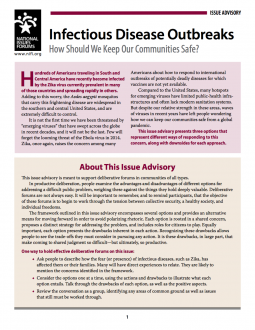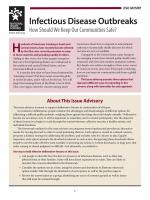Hundreds of Americans traveling in South and Central America have recently become infected by the Zika virus currently prevalent in many of those countries and spreading rapidly in others.
Adding to this worry, the Aedes aegypti mosquitos that carry this frightening disease are widespread in the southern and central United States, and are extremely difficult to control.
It is not the first time we have been threatened by “emerging viruses” that have swept across the globe in recent decades, and it will not be the last. Few will forget the looming threat of the Ebola virus in 2014. Zika, once again, raises the concern among many Americans about how to respond to international outbreaks of potentially deadly diseases for which vaccines are not yet available.
Compared to the United States, many hotspots for emerging viruses have limited public-health infra- structures and often lack modern sanitation systems. But despite our relative strength in these areas, waves of viruses in recent years have left people wondering how we can keep our communities safe from a global pandemic.
This issue advisory presents three options that represent different ways of responding to this concern, along with downsides for each approach.
Option 1: Enforce Safety Rules
In an interconnected world, diseases we have never heard of could easily invade our communities. As the US Centers for Disease Control puts it, “An outbreak of infectious disease is just a plane ride away.” This option holds that we must be prepared to take strong measures to keep our communities safe from such outbreaks. Such measures in China, the United States, and other countries, were used to successfully contain an outbreak of Severe Acute Respiratory Syndrome (SARS) in 2003.
Option 2: Stamp It Out at the Source
The procedures and capabilities in place in the United States are probably sufficient to manage the spread of Zika and similar infectious diseases within our country, if necessary. But to prevent them from reaching us, such diseases need to be contained in the countries from which they emerge. We must significantly increase our efforts to work with other nations to address public-health crises when and where they arise. It is not enough to wait until infectious diseases cross our own borders while making only halfhearted attempts to address the crisis where it starts.
Option 3: Emphasize Prevention and Preparation in the Community
In this view, we have become too complacent, believing our society to be too highly developed to be at real risk of a serious disease outbreak. As a result, on a collective level as well as an individual level, we have placed our communities at great risk. Public-health and research budgets are shrinking. Lower income neighborhoods, which can have sanitation challenges and reduced access to health care, are especially at risk. We should put precautions, protocols, and technology in place to respond swiftly to outbreaks, both at the care and research levels.


